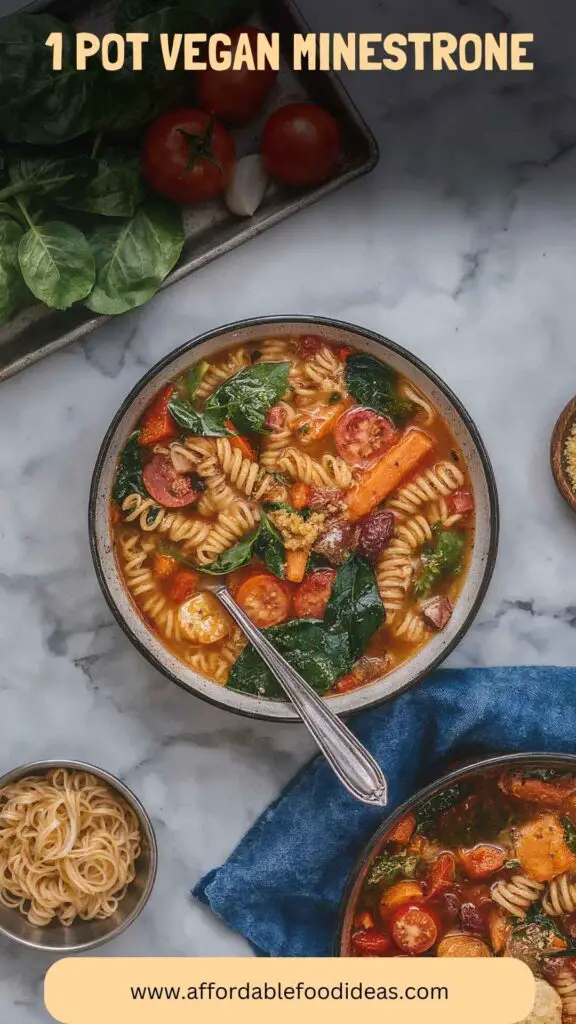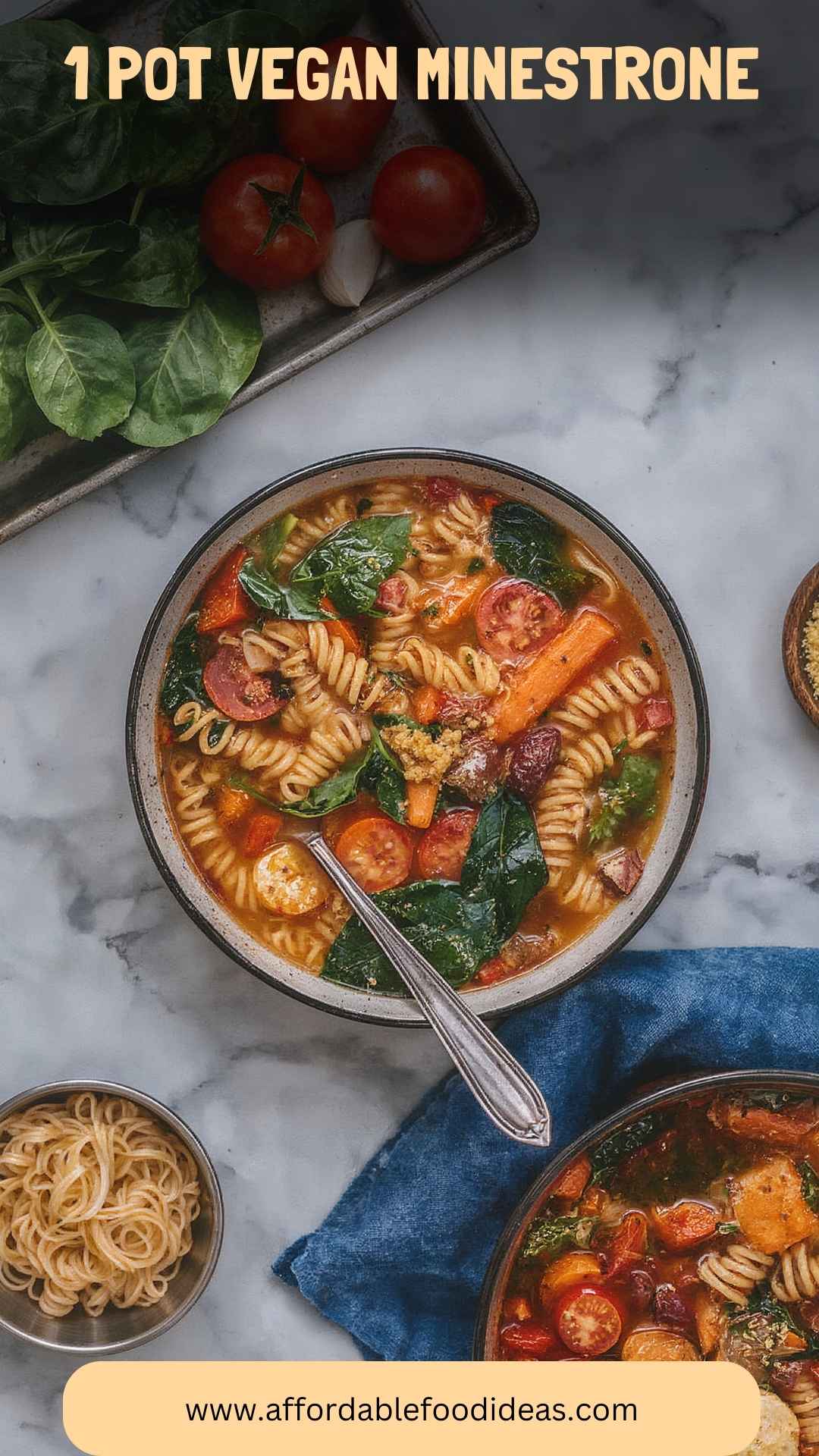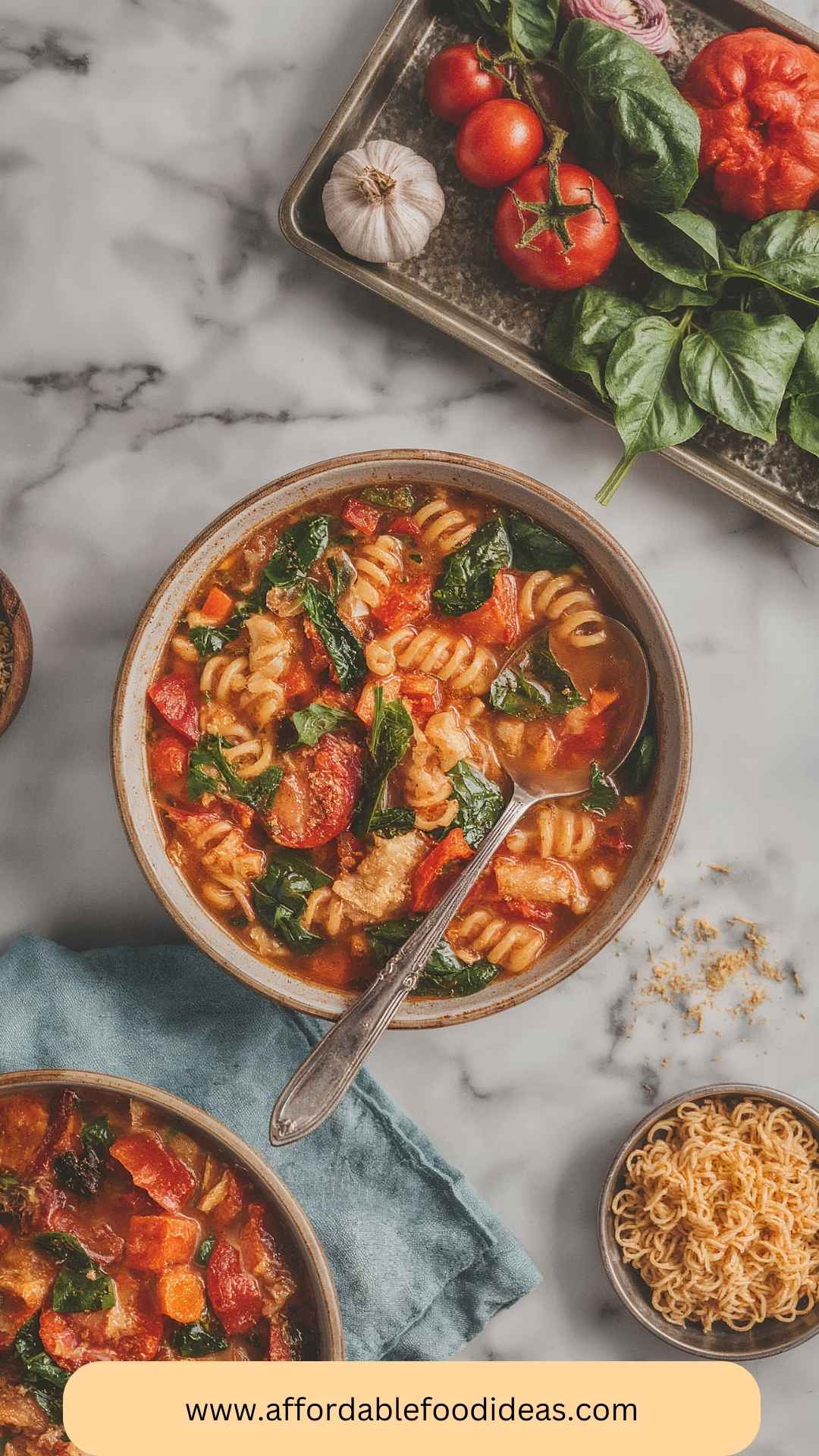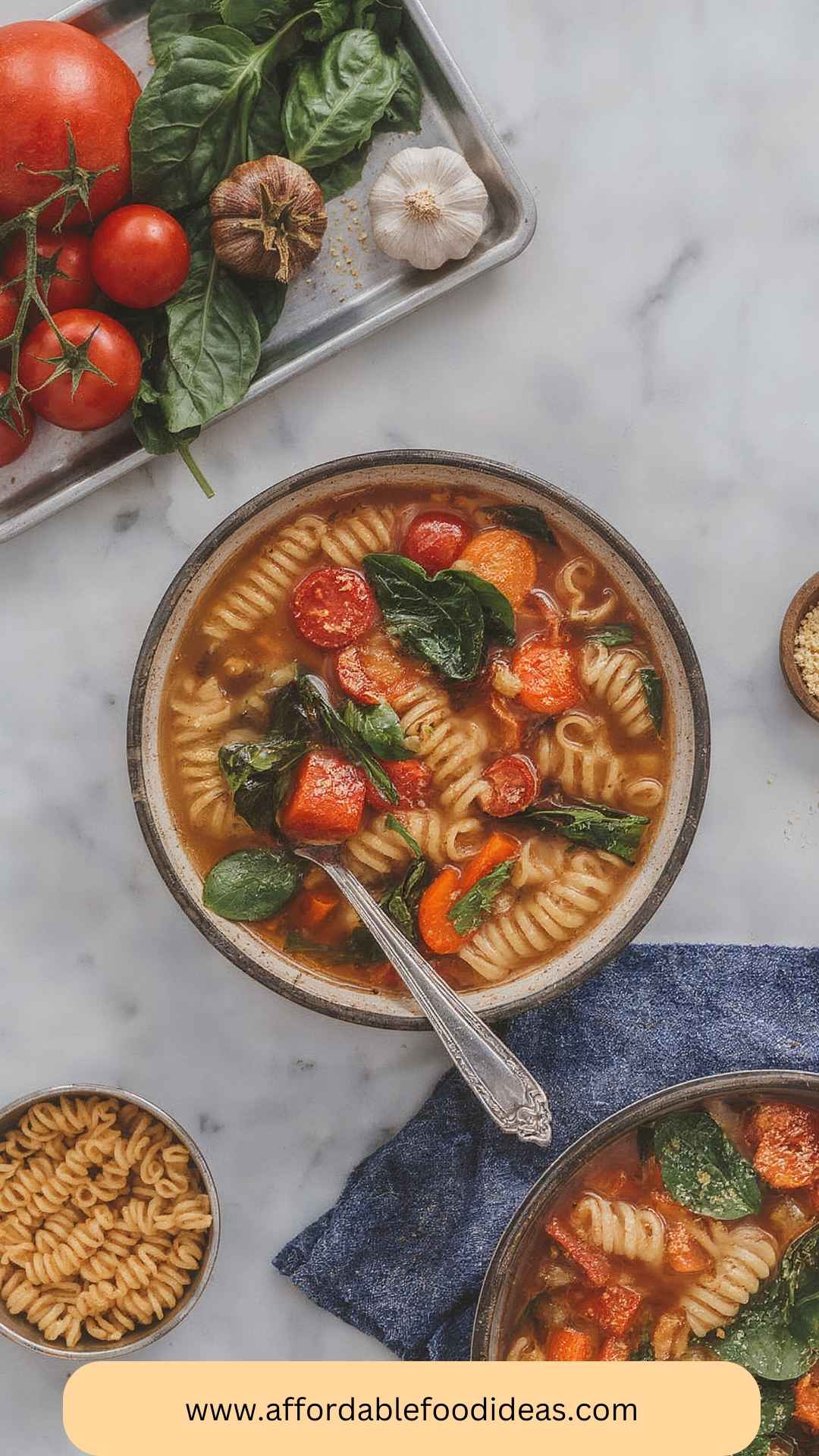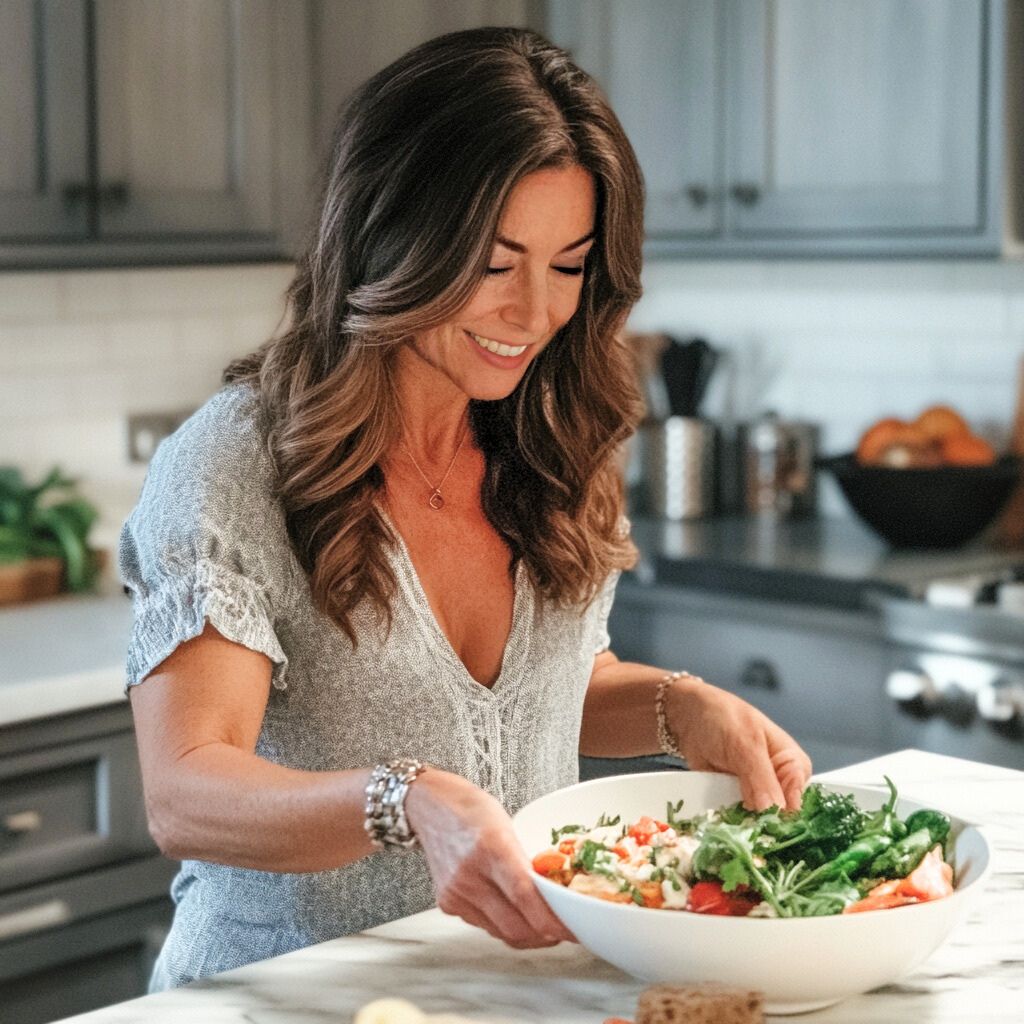Before we dive in, let's chat about what to enjoy alongside this amazing vegan minestrone. Pairing is key, and here are some brilliant options:
- Crusty Bread: Whether it’s sourdough or a hearty whole grain, a slice of bread is perfect for sopping up that delicious broth.
- Garden Salad: A fresh salad with leafy greens and a light dressing complements the heartiness of the soup well.
- Garlic Bread: Who doesn’t love garlic bread? It’s an easy way to add flavor and texture to your meal.
- Vegan Grilled Cheese: This hearty, cheesy delight brings a comforting component to your meal.
Now that you’ve got your side dishes in mind, let’s get into the good stuff!
What is 1 Pot Vegan Minestrone Gluten Free?
In essence, it’s a delicious vegetable-packed soup made famous in Italy, reimagined here to meet vegan and gluten-free standards. It celebrates seasonal produce and can be adapted based on what you have at home. Each spoonful tells a story of rich flavors and wholesome nutrition.
Why This Recipe Works
Here’s why this minestrone will earn a top spot in your recipe repertoire:
- Nutrient-Dense Ingredients:
The combination of fresh vegetables, beans, and gluten-free pasta creates a nutrient powerhouse. Each serving boasts ample vitamins, minerals, and fiber to keep you satisfied.
- One-Pot Wonder:
Simplicity at its best! With only one pot used, clean-up is a breeze. You can focus on cooking and enjoying rather than stressing about the dish duties.
- Time-Saving:
This recipe comes together in just about 30 minutes. Perfect for busy weeknights! You can whip up a delicious meal without being tied to the kitchen all evening.
- Versatile and Customizable:
Feel free to swap out vegetables or legumes based on your pantry and preference. This recipe welcomes creativity and adapts to what you have on hand. From zucchini to kale, there’s room for delightful additions.
Ingredients You'll Need To Make This 1 Pot Vegan Minestrone Gluten Free
Gather these fresh ingredients to put the pot on the stove:
- 2 tablespoons water (substitute with olive oil for richness)
- ½ medium white or yellow onion, finely diced
- 3 cloves fresh garlic, minced
- 2 large carrots, peeled and sliced into thin rounds
- 1 small zucchini, sliced into ¼-inch rounds
- 1 ½ cups fresh green beans, trimmed and roughly chopped
- 1 (15-ounce) can fire-roasted diced tomatoes
- 6 cups vegetable broth (homemade or store-bought)
- 2 teaspoons dried basil (or 1 tablespoon fresh per 2 teaspoons dried)
- 2 teaspoons dried oregano (or 1 tablespoon fresh)
- 1 teaspoon smoked paprika
- ¼ teaspoon each sea salt and freshly ground black pepper
- 1 tablespoon coconut sugar (or natural sweetener)
- 1 tablespoon nutritional yeast
- 1 (15-ounce) can white beans or chickpeas, rinsed and drained
- 2 cups gluten-free pasta (fusilli is excellent)
- 1 cup kale or baby spinach, roughly chopped
- 1 pinch crushed red chili flakes (optional)
- 1 tablespoon fresh lemon juice
How To Make This?
Ready to cook? Let me walk you through the steps:
Step 1: Sauté the Aromatics
In a large pot, begin by heating the water (or olive oil) over medium heat. Add the onion and sauté for about 3-4 minutes or until translucent. Toss in the minced garlic and cook for another minute until fragrant.
Step 2: Add the Vegetables
Next, stir in the carrots, zucchini, and green beans. Sauté for an additional 5-7 minutes until the veggies are tender but still crisp.
Step 3: Incorporate the Tomatoes and Spices
Pour in the can of fire-roasted diced tomatoes, along with their juices, followed by the vegetable broth. Add the dried basil, oregano, smoked paprika, salt, pepper, and coconut sugar. Stir well to combine and bring the mixture to a boil.
Step 4: Simmer the Soup
Once boiling, reduce the heat to low. Let the soup gently simmer for about 10 minutes. This allows the flavors to meld wonderfully.
Step 5: Add the Pasta and Beans
Stir in the gluten-free pasta and white beans (or chickpeas). Continue to cook for another 10-12 minutes or until the pasta is cooked through. Stir occasionally, ensuring the pasta doesn’t stick to the bottom of the pot.
Step 6: Finish With Greens
Finally, fold in the chopped kale or spinach, allowing it to wilt, and add a splash of lemon juice for a fresh finish. Taste and adjust seasonings as needed.
Step 7: Serve and Enjoy
Ladle the minestrone into bowls and enjoy it hot. Add a pinch of crushed red chili flakes on top if you like a little heat.
Tips for Making the Best Vegan Minestrone
- Chop Veggies Evenly: This assists in even cooking. Think dice over chop.
- Experiment with Herbs: Fresh herbs amplify the flavor, but don’t shy away from dried options if that’s what’s on hand.
- Use Quality Broth: A good vegetable broth can elevate the minestrone to new heights. Try homemade for the best taste!
- Don’t Overcook Pasta: Gluten-free pasta deserves special attention, as it can become mushy quickly. Test a minute early.
- Add More Veggies: If you have leftover vegetables in the fridge, toss those in. This recipe is incredibly forgiving.
Nutrition Information
Each serving of this minestrone is not just soul-warming; it's packed with goodness. Here’s what you're getting (approximately):
- Calories: 320
- Protein: 15g
- Carbohydrates: 55g
- Dietary Fiber: 12g
- Saturated Fat: 1.5g
This dish is rich in vitamins A, C, and K, providing great health benefits.
How to Store The Leftovers?
If you’ve got leftover minestrone (lucky you!), here’s the best way to keep it fresh:
- In the Fridge: Store leftovers in an airtight container for up to 4 days. Reheat gently on the stove or in the microwave.
- In the Freezer: This minestrone freezes beautifully. Portion it into freezer-safe containers, leaving some space at the top for expansion. It’ll last for about 2-3 months. To reheat, let it thaw overnight in the fridge and warm it up on the stovetop.
Recommended Side Dishes for 1 Pot Vegan Minestrone Gluten Free
Let’s explore a few delightful accompaniments to enhance your dining experience.
- Grilled Vegetable Platter: A mix of seasonal veggies grilled to perfection adds smoky flavors and colors. Opt for zucchini, bell peppers, and asparagus.
- Quinoa Salad: Prepare a refreshing quinoa salad with tomatoes, cucumbers, and herbs. It pairs well with the soup’s richness.
- Roasted Garlic Hummus: Serve creamy hummus with pita bread or fresh veggies for dipping. The creamy texture works beautifully with the hearty soup.
- Caprese Skewers: Alternating cherry tomatoes, basil leaves, and olives create a charming appetizer. Drizzle with balsamic glaze for a touch of elegance.
What if Some Ingredients Are Not Available?
No worries if you find yourself missing an ingredient! Here are some substitutions:
- Vegetable Broth: If you don’t have vegetable broth, use low-sodium water or homemade vegetable scraps mixed with water.
- Gluten-Free Pasta: Can’t find gluten-free pasta? Any type of small pasta, like orzo or even rice, can work, but adjust cooking times accordingly.
- Fresh Vegetables: Feel free to substitute your favorite vegetables. Bell peppers, spinach, or corn can enhance the flavor profile.
- Nutritional Yeast: If this isn’t available, you can skip it or sprinkle in a bit of grated vegan cheese for a cheesy note.
Conclusion
Creating a pot of vegan minestrone is not just about feeding the belly; it’s about nourishing the spirit. Each bowl is a celebration of flavor and health, reminding us that comfort food can indeed be wholesome.
So, grab your ingredients, roll up your sleeves, and let this one-pot wonder fill your kitchen with warmth. Whether you’re sharing this meal with family or savoring it solo on a quiet evening, you’ll find joy in every delicious spoonful. Enjoy cooking, and bon appétit!
You’ll also like the following Recipes!

